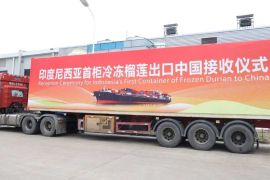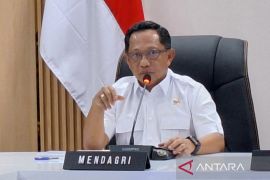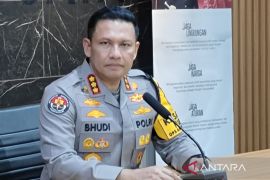"Most of the power plants to be built next year will use steam with coal as their fuels. Some 13,049 MW of the total 17,340-MW projects will use coal, while the remaining 4,291-MW projects will use gas, hydro, and geothermal sources of energy," Sofyan Basir, the president director of state-owned electricity company PLN, stated on Tuesday.
The PLN president director noted that agreements on the construction of the 17,340-MW power projects had been signed, and the work on them was expected to commence in early 2016.
The 17,340-MW electricity projects are part of the 35 thousand MW capacity that the government is planning to develop and complete by 2019. This move is aimed at increasing the nations current electricity generation capacity from some 50 thousand MW now to 85 thousand MW by the end of 2019.
Sofyan remarked that of the 17,340-MW power projects whose contracts had been signed, about 4,291 MW will use clean and renewable sources of energy, such as gas, hydro, and geothermal.
"The remaining 13,049 MW will use coal," he revealed.
He said the contracts for the construction of the 8,040-MW projects were signed on December 21, 2015.
"Thus, the contracts that have been signed (for the development of 35 thousand-MW electricity projects until 2019) have covered 17,340 MW. The projects are located in almost all islands in Indonesia: Sumatra, Java, Kalimantan, Sulawesi, Nusa Tenggara, Maluku, and Papua. The contracts also covered the development of diesel power plants for 50 outlying or isolated regions," he stated.
According to the PLN president director, the company has signed power purchase agreements (PPAs) of 8,040 MW on Monday (Dec. 21).
"This is the first time that PLN has signed PPAs with such a huge electricity capacity," Basir noted after attending a meeting between President Joko Widodo (Jokowi) and power investors at the State Palace on Tuesday.
He said of the 17,340-MW power projects in 2016, some 4,291 MW will use clean and renewable sources of energy. They will be fueled with gas, hydro, and geothermal sources of energy, while some 13,049 MW will be generated by using coal.
The choice of the sources of energy to be used has been made in a bid to optimize the use of local resources available in Indonesia.
"The locations of the projects are scattered across the country from Sumatra in the western part to Papua in the eastern region," he pointed out.
Contractors of the projects will bring new technologies with them from Japan, China, the United States, and Europe.
He said in the coming six months, the contractors would have begun work on the projects, thereby leading to a spurt in economic activities, which would absorb workers.
In May 2015, the government launched a 35 thousand-MW power development program, which comprised 10 thousand MW, or 35 projects, to be implemented by the PLN and the remaining 25 thousand MW, or 74 projects, to be developed by the private sector through an independent power producer (IPP) cooperation scheme. The projects are expected to absorb 650 thousand workers.
"It will have a positive impact as the projects will absorb some 650 thousand new workers," the PLN president director pointed out.
However, Sofyan emphasized that to achieve the power development target, the PLN had sought the governments assistance to solve their land acquisition disputes. The government also needs to publicize the programs among land owners affected by the projects.
"We hope for the presidents support, so that the program will run smoothly by solving various on-field problems, such as land clearance, permits, and transmission network lanes. This will involve several parties, such as the local governments, land owners, and residents living under the transmission networks," he remarked.
At a gathering on Tuesday attended by some 150 investors from the electricity sector, President Jokowi vowed that his government will offer assistance to accelerate the development of the power projects.
The president acknowledged that the delay in the land acquisition process did hinder the development of projects, citing the Batang power plant as an example.
He said the land clearance process for a power project in Batang had been delayed for four years. However, it did not mean that it could not be accelerated.
"We have the capacity to develop projects to generate 35 thousand MW of electricity. If the permit issuance process is too complicated and lengthy, then such bureaucratic procedures should be cut short. That is what we are doing now," he explained.
Regarding the development of new and renewable sources of energy, Minister of Energy and Mineral Resources (ESDM) Sudirman Said revealed that he had signed a memorandum of understanding (MoU) with the Asian Development Bank (ADB) on the development of a clean energy research and technology center in Indonesia.
"This is part of the efforts to achieve the use of up to 25 percent renewable energy in 2025," noted Minister Said.
He said the cooperation is in the form of a loan worth US$6 billion and a grant, though he did not mention the exact value of the grant assistance.
He said the development of a clean energy research center required an investment of US$7 billion.
"Investment on the development of clean energy is huge, but we will start it in Bali," Said stated.(*)
Reporter: Andi Abdussalam
Editor: Heru Purwanto
Copyright © ANTARA 2015











